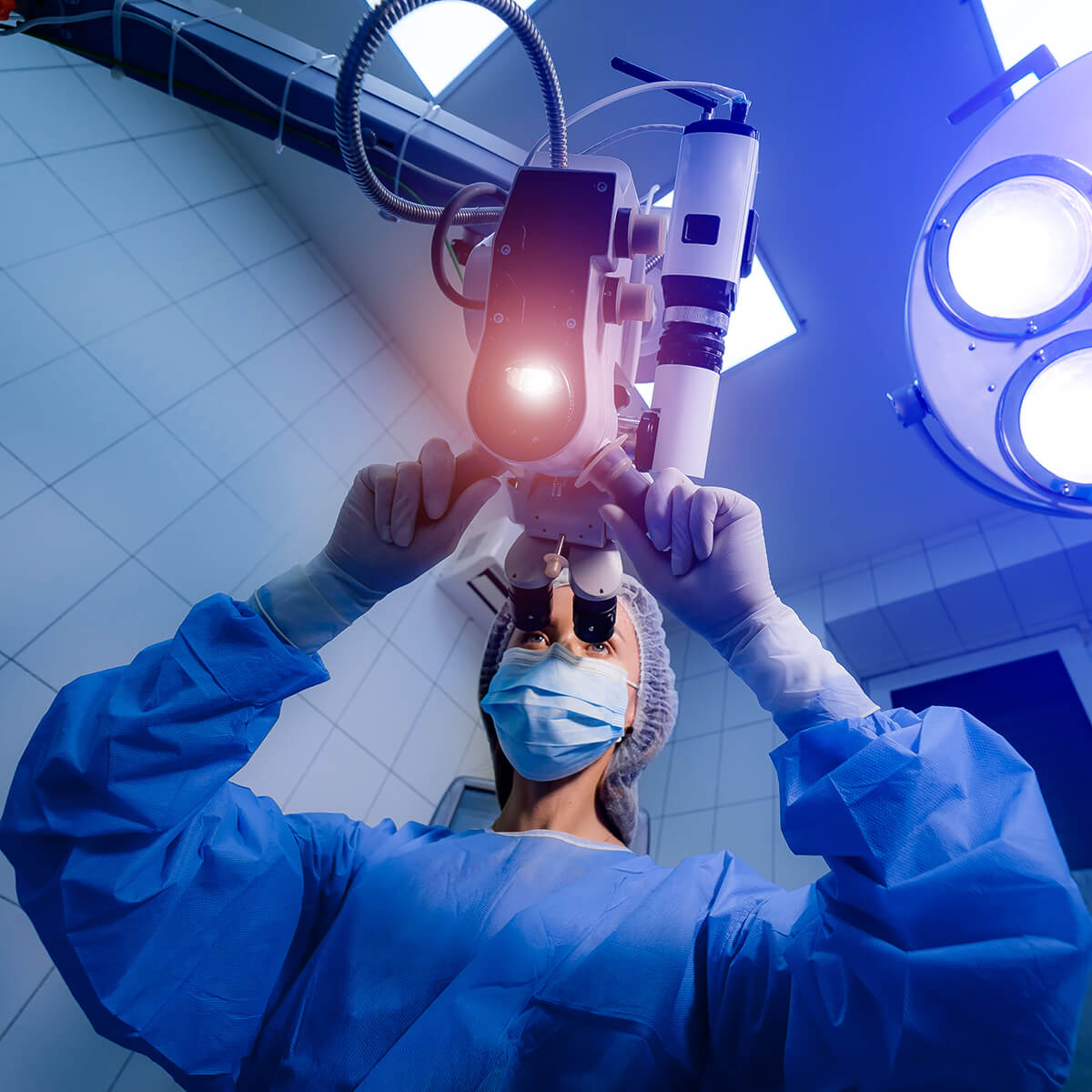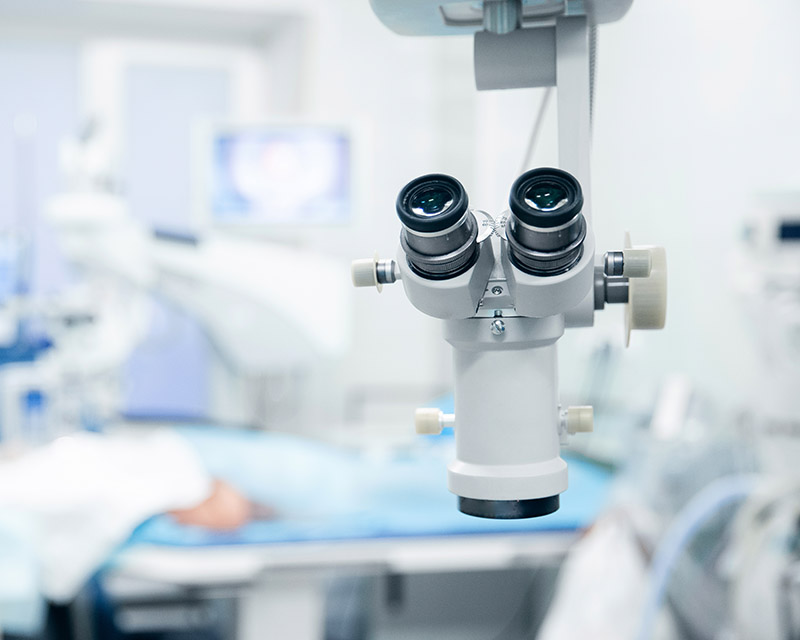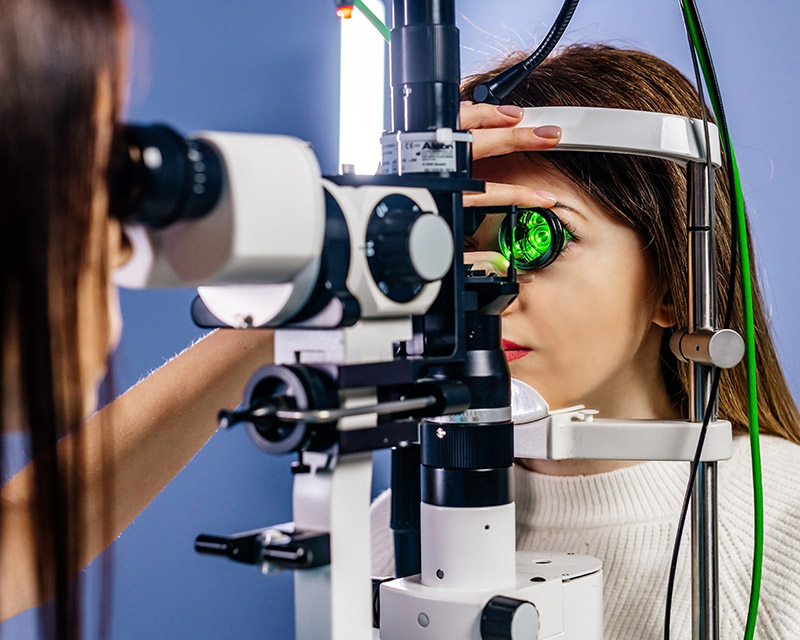Using the latest in vision correction technology, our LASIK specialists help patients in Pinellas County achieve crisp, clear sight with vision correction surgery.
According to the American Refractive Surgery Council, more than 90% of people who undergo LASIK eye surgery achieve vision that is 20/20 or better.

LASIK, which stands for laser-assisted in situ keratomileusis, is a laser vision correction procedure designed to reduce or eliminate your need for eyeglasses or contact lenses. The cornea, the clear front surface of the eye, helps focus light on the retina at the back of the eye for sharp vision. LASIK improves vision by correcting the shape of the cornea in eyes that do not have light correctly focused on the retina.


Since it was invented more than 30 years ago, and FDA approved more than 20 years ago, LASIK has been studied extensively for safety and efficacy. According to the American Refractive Surgery Council, LASIK has an excellent safety track record, with a complication rate below 1%. In fact, studies show that wearing contact lenses introduces a higher risk of certain complications, such as microbial keratitis, when compared to LASIK. Many eye doctors choose to have LASIK themselves and recommend LASIK for their family members.
The benefits of clear vision are endless. More than 96% of LASIK patients report happiness with their improved vision. While each patient has a unique experience with LASIK, benefits include:

LASIK is a great option for many patients, and you may be a good candidate if you:
Take our quick candidacy quiz to learn if LASIK may be right for you!

Our physicians customize a laser treatment plan for each eye. Using precision guided lasers, the irregularities that cause vision problems can be corrected.
At Weinstock Laser Eye Center, a division of The Eye Institute of West Florida, our surgeons are highly skilled to provide the best visual results. They have performed thousands of LASIK procedures using “bladeless” all-laser technology.
Sometimes a patient is not a good candidate for all-laser LASIK surgery due to a flat, steep or thin cornea or whose epithelium has the potential for an epithelial slide. PRK or Epi-LASIK (Laser Epithelial Keratomileusis) is an option for a wide range of patients.
Your age, eye condition, and vision correction needs will determine which laser surgery procedure is right for you. You can schedule a complimentary consult to learn what treatment plan is best for your eyes.

Like a fingerprint, every eye is unique. Therefore, a unique treatment plan for LASIK eye surgery is needed. Wavefront analysis is a technique we use to produce a 3-dimensional measurement that explains how the eye processes images and to adjust the settings that guide our laser to re-shape the front part of the eye (cornea).
The precision of our wavefront-guided system individualizes vision correction with outcomes that would otherwise be impossible to achieve with traditional LASIK surgery, contact lenses or eyeglasses.
How well the eye can focus light rays is partly determined by the quality of the corneal surface. When measured using wavefront technology, the irregularities of the corneal surface are mapped. That information allows our physicians to customize a laser treatment plan for each eye. Using precision-guided lasers, the irregularities can be corrected.
Standard prescriptions for glasses, contacts or traditional LASIK procedures can correct ordinary vision defects such as myopia, hyperopia, and astigmatism. But other irregularities associated with the eye’s optical system could not be addressed until the advent of wavefront and related technology used in custom LASIK.


LASEK is a suitable alternative to LASIK when the cornea is too thin to create an acceptable flap using the microkeratome. In LASEK, the epithelium, or outermost layer of the cornea, is covered with an alcohol solution. Your surgeon will loosen the edges of the epithelium creating a flap. Using a tiny instrument, the flap is gently folded back out of the way. The excimer laser applies a cool beam of light, which gently reshapes the cornea, allowing images to be more sharply focused by the retina to correct the individual refractive error. After the cornea is reshaped, the epithelium is returned back to its original position. A contact lens is placed on the cornea for a minimum of three days to aid in the healing of the cornea.

Epi-LASIK (Laser Epithelial Keratomileusis) is for patients who might otherwise not be good candidates for LASIK due to a flat, steep or thin cornea or patients whose epithelium has the potential for an epithelial slide. While Epi-LASIK is the best option for patients like these, this procedure may be a suitable option for a wide range of patients.
Rather than using an alcohol solution to loosen the epithelium as in LASEK, our surgeon uses a special blade to separate the epithelial sheet from the eye with its hinge intact and gently lifts and folds it out of the way. With an excimer laser, a cool beam of light is applied to the cornea to reshape its surface to allow images to focus sharply on the retina, correcting the individual’s refractive error. The surgeon will then gently lift the epithelial flap and fold it back over the cornea with a spatula-like instrument and the eye heals within a few days.
Getting ready for LASIK is simple. During your consultation appointment, our experienced LASIK surgeon will learn more about you and check your eyes to ensure that LASIK is right for you. We will also answer any questions you have. Once your LASIK appointment is scheduled, our team will give you detailed preoperative instructions.
LASIK is an outpatient procedure, and the actual surgery takes as little as 15 minutes per eye.

LASIK recovery is typically quick and easy. Here are a few things to keep in mind:
Our team will give you detailed postoperative instructions and schedule you for a follow-up appointment.

At Eye Institute of West Florida, we know how important affordable vision care is to our patients. We also understand that each patient has unique needs and goals.
The cost of LASIK can vary based on your personalized treatment plan. We will give you transparent pricing information, as well as financing options, at your consultation appointment.
Schedule a free consultation appointment with your Pinellas County LASIK eye doctor to better understand what your LASIK procedure will cost at Eye Institute of West Florida.
Did you know that LASIK can save you money over the long term when compared to the cost of eyeglasses and contact lenses?
With LASIK being such a big decision, you might be wondering, “How long does LASIK last?” Eye Institute of West Florida is here to give you the details about how long it works.
During your eye exam, your doctor will check for any sign of eye conditions that may disqualify you for LASIK, such as thin corneas, keratoconus, glaucoma, or severe dry eye disease. If it turns out that LASIK isn’t right for you, your eye doctor may be able to recommend another vision correction procedure.
Our physicians will want to be aware of other eye problems including amblyopia (lazy eye), strabismus (muscle imbalance), severe dry eyes, previous eye surgery or injury, or any recurrent, residual or active eye conditions which may affect healing like keloid scarring. Patients should make our physicians aware of back problems, claustrophobia, or other psychological problems, which may affect the surgery or recovery.
LASIK is generally considered a quick and comfortable procedure. Most patients find that the anesthetic eye drops applied before the surgery ensure no pain during the procedure. You might feel a sensation of pressure or experience dimming of your vision at various points in the procedure.
Most medical and vision insurance plans consider LASIK to be elective and therefore do not cover it. However, you can use a flexible spending account (FSA) or a health savings account (HSA) to pay for LASIK, or you can take advantage of our financing options.
Usually, both eyes are done on the same day. Since the patient can resume most of their normal activities within 24 hours, most elect to have both eyes done the same day for convenience.
Patients are checked the day following their procedure and may return to work and resume most normal activities.
A lid speculum keeps your eyelids from blinking, and our doctors control your eye movements with an instrument they designed specifically for this purpose. This keeps your eye centered on the target but if you sneeze or cough, the doctor removes his foot from the laser pedal and continues the treatment after he re-centers your eye.
To ensure your comfort and confidence, your head and neck are kept snug in an inflatable pillow, your lids are kept open with a speculum and your eyes are treated with numbing drops that prevent your eye from reacting to stimuli. Our doctors will indicate before each step what you may see, hear or feel so you are not surprised.